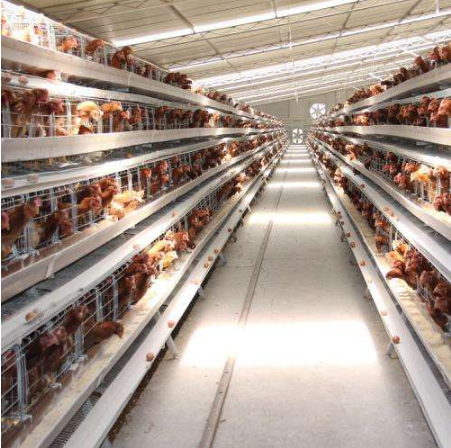In the summer, the chicken cages are used to raise chickens. In addition to the cooling work of the chicken houses, there are also changes in the management of feeding. Summer weather is hot, high temperature will directly affect the normal production of laying hens, affecting the production efficiency of farmers. Therefore, in the summer layer chicken cages to raise chickens, farmers should change the feeding management in a timely manner, and timely ventilation and cooling. The author suggests that farmers should do the following work in summer battery layer cages:
1. Ensure adequate ventilation: When raising chickens in summer, farmers should do ventilation work in a timely manner every day. If it is a closed chicken house, it is recommended that the farmer should set the daily ventilation time of the fan. If the farmer’s house has windows, it is recommended to open all the windows to make the air convection in the house, and the carbon dioxide and ammonia in the house. Exhaust gases such as gas are excluded, and there is also a role of cooling.
2. Ensure that the chickens have enough water: during the hot season, the water of the hens and chickens is faster than that of other seasons, so the farmers should supply the hens in time. The lack of water in laying hens will reduce the rate of egg production, so you must supply enough cool water. This requires farmers to do regular cleaning of water supply equipment to ensure that the chickens drink enough water.
3. Regular removal of manure: If the manure in the house is not treated in time, it will cause a large amount of ammonia in the house, so it is especially important to clean the manure in summer. A large amount of ammonia gas will affect the laying performance of laying hens. In order to provide a good production environment for the chickens, it is necessary to regularly remove the feces, improve the indoor environment and improve the production level.
4. Adjusting the diet: When raising the laying hens in the summer, the farmers should adjust the proportion of feed nutrition appropriately. The proportion of energy in the feed should be appropriately reduced, and the content of crude protein in the feed should be increased by 1% to 2% to ensure that the laying hen still has enough protein for production needs in the case of reduced feed intake; Proportion, while adding 0.1%-0.2% baking soda to the feed to adjust the pH of the chicken, reduce the stress of the chicken on high temperature, and achieve normal production.
5. Illumination management: Farmers can set the opening time of the house to be in the early hours of the morning, and the time to turn off the lights in the morning, so that the laying capacity of the laying hens can be produced 4-5 hours after the light is turned on. At noon, the chickens are free to drink water, rest enough to reduce the movement of the chickens; the lights are not turned on at night, the house temperature is gradually reduced, and the chickens are not active, which can improve their ability to resist high temperatures.
6. Disease prevention and treatment: In addition to the normal immunization program, in the hot season, it is necessary to adhere to the removal of all contaminants in the chicken house, regular environmental disinfection and indoor disinfection with chickens; breeding management personnel must also strictly implement the epidemic prevention regulations.
